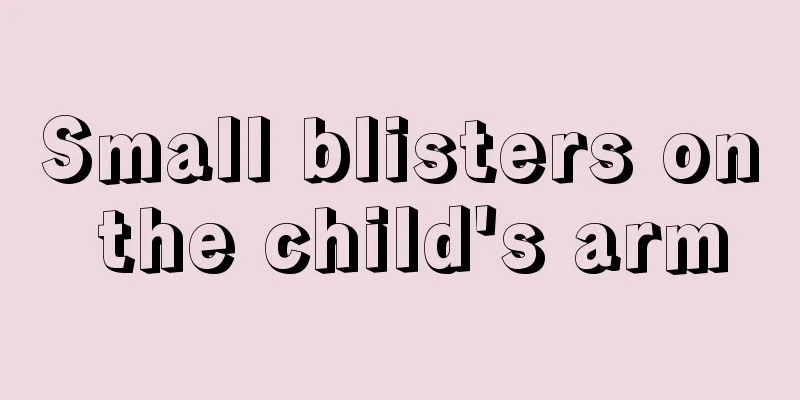Treatment of endotracheal intubation in children

|
Everyone knows about pediatric endotracheal intubation surgery. It is a major surgery for children, but if there is a problem with the child's trachea, such surgery is needed. However, many parents have doubts and do not understand what pediatric endotracheal intubation surgery is like. Although everyone knows the specific operations and requirements of this surgery, let us now learn about the relevant knowledge of pediatric endotracheal intubation surgery. An effective measure to quickly open the airway by inserting a special endotracheal tube into the trachea through the mouth or nose. It can not only relieve airway obstruction and provide effective ventilation, but also perform intratracheal drug administration. It plays a key role in the rescue of critically ill patients. Indications for endotracheal intubation, respiratory and cardiac arrest requiring cardiopulmonary resuscitation, endotracheal intubation for anesthesia, respiratory failure caused by various reasons, large amounts of respiratory secretions requiring endotracheal suction after intubation, rescue of airway obstruction, basic anatomy of the airway in neonates with asphyxia, the respiratory system consists of two parts: the respiratory tract (also called the airway) and the lungs. The respiratory tract can be divided into the upper respiratory tract and the lower respiratory tract. Clinically, the mouth, nose, pharynx, and larynx are called the upper respiratory tract, and the trachea, bronchi, and their branch bronchi in the lungs are called the lower respiratory tract. Oral The mouth is the trachea and the entrance to the intubation tube. The main landmarks are: uvula, palatine tonsils, palatopharyngeal arch, and pharyngeal isthmus. The larynx is located in the front part of the neck, connected with the laryngopharynx above and the trachea below. The position of the larynx in adults is such that the upper limit is just in front of the 4th and 5th cervical vertebrae, and the lower limit is level with the lower edge of the 6th cervical vertebra. Females are slightly higher than males. Anatomical features of the respiratory system in children The head and tongue are relatively large and the neck is short. The nostrils are approximately equal in size to the cricoid cartilage. The larynx is located higher - in the cervical 3-4 plane, more forward and toward the head. The epiglottis cartilage is larger, more rigid, and more pendulous (U-shaped or V-shaped). The narrowest part of the larynx is the cricoid cartilage, but after the age of 6 it is at the glottis. The angles between the left and right bronchi at the tracheal bifurcation are basically the same Endotracheal intubation The three axes of the trachea and bronchial upper respiratory tract are the oral axis, the pharyngeal axis, and the laryngeal axis. Airway length reference value Incisor to glottis 11 to 13 cm 8 to 10 cm Incisor to carina 28 to 32 cm 15 to 19 cm Preparation of items Laryngoscope, choice of laryngoscope Selection of endotracheal tube: reference for selection of inner diameter ID ID(mm)=age/4+4.0 tooth pad, stylet, syringe Suction equipment, simple respirator, oxygen mask, stethoscope The above is the knowledge related to pediatric endotracheal intubation. Parents can read it carefully to understand it, so that they can better understand the preparation for the operation and the conditions required for pediatric endotracheal intubation. Every parent does not want their children to undergo such an operation, but if there is really a disease in this area, surgery is required. Therefore, as parents, we can learn more about this knowledge, which is good for ourselves and even more beneficial for our children. |
<<: At what age does a baby no longer need diapers?
>>: When should children receive vaccinations?
Recommend
Why does my child feel hot and cold and have dry mouth in the middle of the night?
As we all know, the various functions of children...
Don't buy these five types of cakes for your children
Many families prepare some desserts such as small...
What is the reason for a child to have a fever and vomit?
In people's daily lives, some diseases will o...
What to do if your child has toothache
If children do not pay much attention to oral hyg...
How to lose weight when a child has a big belly? These methods are very effective
If a child has a big belly, it is mostly caused b...
Small testicles in infants
When a baby is just born, the testicles are relat...
Best ointment for children's eczema
We all want to have skin like a baby's becaus...
What to do if your 6-month-old baby has enteritis
Six-month-old babies are just beginning to eat co...
How to deal with children who don’t like to eat?
Eating is a very important aspect during childhoo...
What to do if the baby's umbilical cord is around the neck
After a woman becomes pregnant, the umbilical cor...
Can children have body odor?
The real name of body odor is bromhidrosis. Body ...
How to make pea baby food?
As we all know, babies can be fed with breast mil...
Why does the baby sleep during the day and cry at night?
Nowadays, every child is the treasure of the fami...
Is rice noodles good for children?
When the baby is about 5 months old, many mothers...
What is the cause of the small hole in the baby's heart?
Babies are a special group because they have poor...









